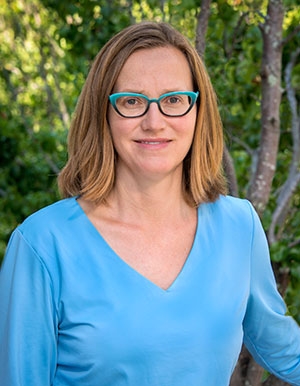Many species of trees and plants have begun migrating as the climate changes, but some, like California’s giant coastal redwoods, can’t just pick up and move.

The proximity of the ocean, which has unique effects on temperature and climate, makes it challenging to predict what the redwoods’ habitat will look like in the future. By using California’s historical climate data, UC Merced researchers have developed near-term predictions about the coastal habitat for the archetypal redwoods.
The trees will need to move north to keep up with the shifting climate.
“This method gets us over a hump that has been challenging climate modelers for many years,” said Lara Kueppers, a researcher with the Sierra Nevada Research Institute and former professor in the School of Natural Sciences. “Usually, models use down-scaled global predictions, but the coastal climate is harder to predict because it’s such a narrow strip of land that is strongly affected by the ocean.”

Miguel Fernandez
Working with Kueppers, then-graduate student Miguel Fernández used the past century’s record of years with exceptional weather to make predictions about future redwood habitat, because what is now exceptional will be normal in the coming 10 to 20 years.
“Climate change, in the context of biodiversity, has extremely complicated synergies that we are just starting to uncover,” Fernández said. “It surprised me how sensitive the redwood’s habitat is to near-term climate change effects. It made me wonder if the long-term effects might be catastrophic if we don’t improve our climate adaptation efforts today.”

Kueppers cautioned that their paper, “Back to the Future: Using Historical Climate Variation to Project Near-term Shifts in Habitat Suitable for Coast Redwood,” recently published in the journal Global Change Biology — isn’t a prediction about the trees themselves. It’s about the habitat they are used to and how that is changing.
“The needed follow-up work is to find out whether the species themselves are tracking these rapid climate changes,” Kueppers said.
Read more about Fernández, Kueppers, and their research here.



